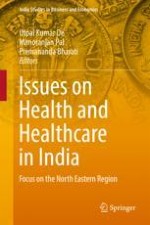This book addresses health and healthcare issues in India with a special focus on the Northeast region. Pursuing a multidisciplinary approach, it highlights key issues in health and healthcare and outlines the actions needed to achieve the desired results in these areas as laid out in the UN Millennium Development Goals. In addition to introducing some new questions on health and healthcare development, it presents cross-country analyses, and examines the convergence of healthcare across Indian states, as well as mortality and morbidity in the Northeast.
The book also explores the regional complexities involved in the discussion of these topics. It presents a number of specific techniques, such as two-level logistic regression, analysis of mental health, probabilistic and predictive analysis of nutritional deficit, and generalized linear mixed models, that can be used to analyze mortality and morbidity and factors affecting out-of-pocket expenses in the healthcare context. Lastly, it presents concrete case studies substantiating the theoretical models discussed. As such, the book offers a valuable resource for health researchers, professionals and policymakers alike.
